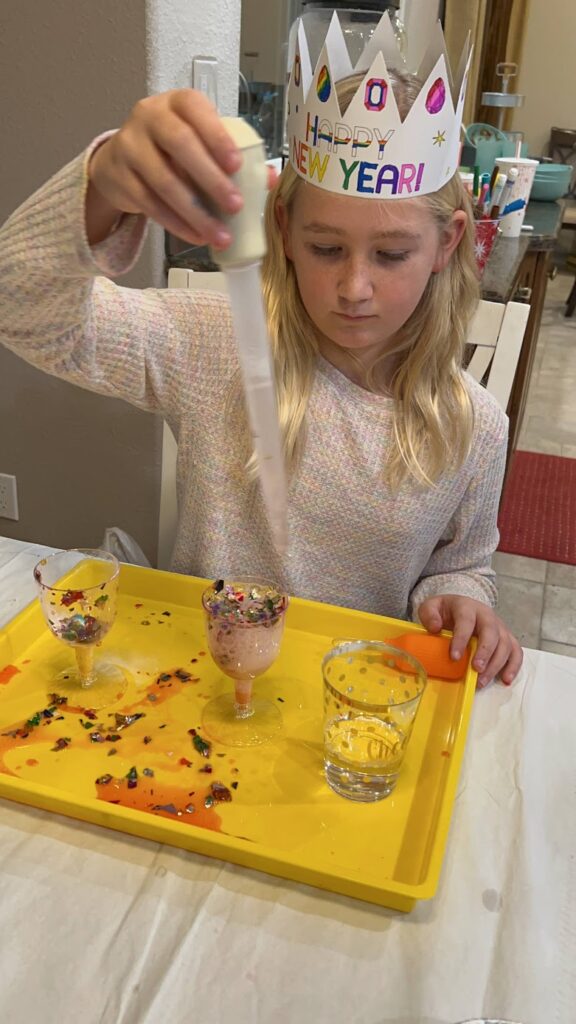
Are there any easy New Year's Eve science activities? Yes! Try our confetti eruptions science activity.
Science lovers will be thrilled with this holiday version of our favorite fizzy eruptions experiments. Science activities with baking soda and vinegar are always a hit!
How to set up our confetti eruptions science activity!
To get started with confetti eruptions, you only need a few simple supplies! The best part of this activity is that it's quick to put together and fun to repeat.

Toddler Approved is a participant in the Amazon Services LLC Associates Program, an affiliate advertising program. As an Amazon Associate, I earn from qualifying purchases. Read more about these links in my Disclosure Policy.
Supplies Needed
- Plastic Champagne glasses
- Baking soda
- Vinegar
- Confetti/sequins/spangles
- Eye dropper or pipet (or small turkey baster or mini squeeze bottle)
- (Optional: food coloring)
- (Optional: craft tray)

How to get set up
To get set up for this confetti eruptions science activity, first you need to gather all your supplies. Now you're ready to get set up.
1. Put one or two spoonfuls of baking soda into each champagne glass.
2. Add some confetti pieces on top of the baking soda.
3. Fill a separate cup with vinegar. Optional: Add food coloring to make it another color.
4. Put a jumbo dropper or turkey baster near the vinegar cup so that you're ready to experiment!
Pro Tip: Place all items on top of a baking pan or craft tray to minimize the mess and keep spills contained.

How to create your own confetti eruptions!
To get started creating your own confetti eruptions all you need to do is stick the dropper or turkey baster in the vinegar, suck it up, and squeeze it into the baking soda!
It's so easy!
Watch what happens when the vinegar hits the baking soda and confetti. Kids will love this part!

The Science Behind this Activity
Vinegar is an acid and baking soda is a base. When an acid mixes with a base, you get a reaction!
When vinegar and baking soda react, they create carbon dioxide gas, water and sodium acetate, which makes bubbles and a fizzy reactions.
This activity is a fun way to show kids that when liquids and solids react they can form a gas and a liquid. You can read more about this chemical reaction over at Science Sparks.
More fun Fizzy Science Activities










Leave a Comment